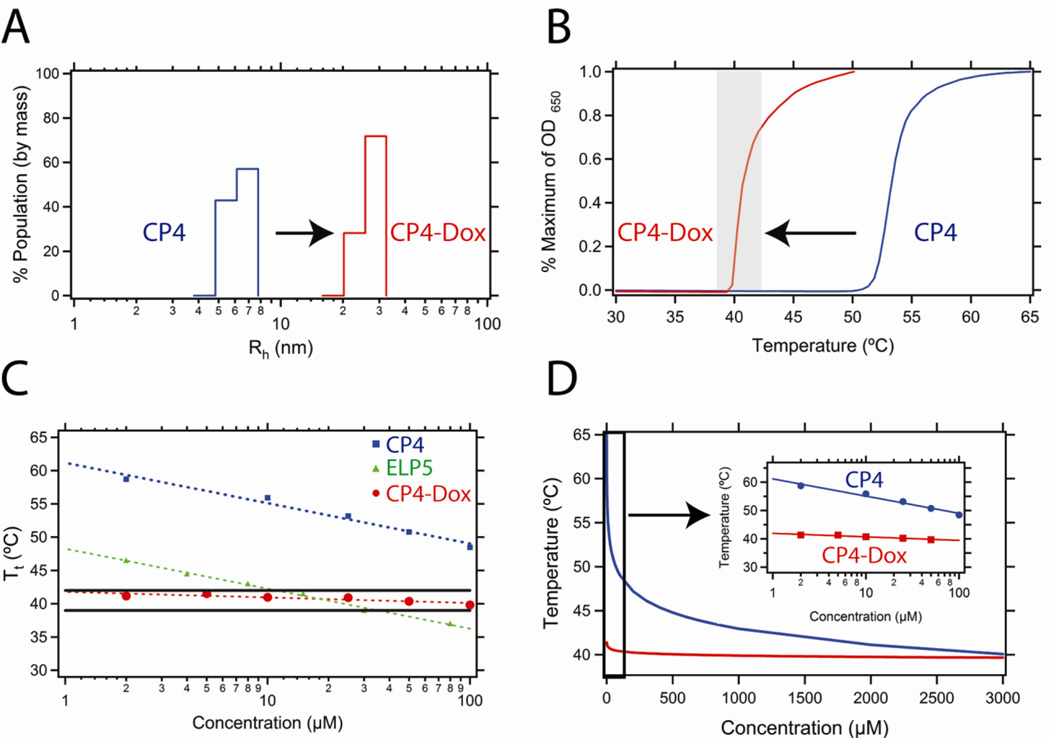Figure 2.
(A) Dynamic light scattering results for the CP4 unimer without Dox conjugation (blue) and the CP-Dox nanoparticle (red) at 25 µM CP concentration in PBS at 25 °C. (B) Turbidity profiles of CP4 unimer without Dox conjugation (blue) and the CP-Dox nanoparticle (red) at 25 µM CP concentration in PBS. The shaded region indicates the hyperthermia window (39 – 42 °C) of interest for in vivo thermal targeting. (C) The CP4-Dox nanoparticle (red) shows virtually no dependence of its Tt on concentration and hence remains within the hyperthermia window (black lines) over a wide concentration range whereas the CP4 unimer (blue) and a CP unimer commonly used in previous hyperthermia studies (ELP5: green; X=A2G3V5; data from [17]) show a strong concentration dependence and hence are thermally responsive over a narrow range of concentration. (D) Representative relationship between the Tt and the concentration for CP4 unimer (blue line) and the CP-Dox nanoparticle (red line). The inset displays a magnified view of the low concentration regime for the CP4 unimer and CP4-Dox nanoparticle.

